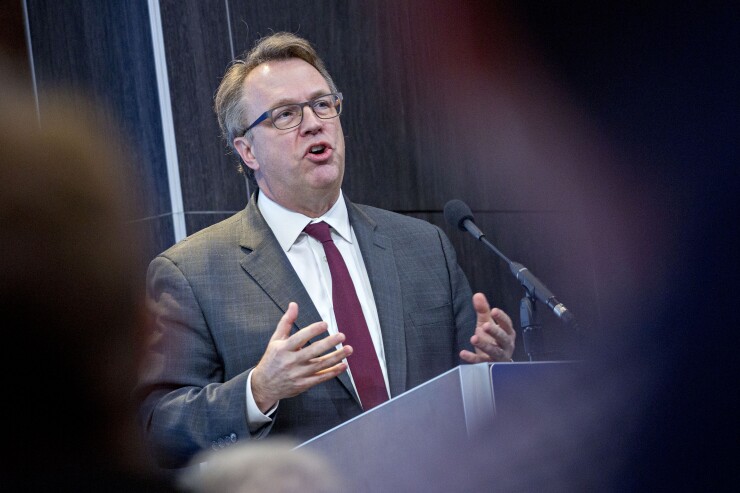The economy should continue its moderate growth path, inflation may tick up, and rates are likely to stay where they are, experts say.
The Fed is well positioned for 2020 despite “some significant downside risks,” Federal Reserve Bank of New York President John Williams said in a televised interview Wednesday.
“Monetary policy is in a good place. We’re well positioned,” he said in an interview on CNBC, although if the outlook changes, the Fed is ready to adjust policy, as needed.
Williams sees growth “around 2% next year,” although in general it will be “more of the same,” with inflation rising a bit and employment staying near 50-year lows. Policy, which is accommodative, continues to support growth, although “there are still some significant downside risks” to the economy, including “quite a bit of uncertainty” regarding trade, Brexit and geopolitical events, Williams said.

Peter Block, managing director of credit strategy at Ramirez & Co., agrees: “The likely stagnation of global growth over the coming year provides the backdrop for range-bound rates.”
Fed futures suggest inflation will hit the Fed’s 2% target next year, and “very little probability of any rate change.”
Should the Fed need to change rates, “monetary policy efficacy at this point is questionable,” Block wrote in a note. “Unlike the 2007-2009 economic contraction, Fed policy has lost some potency as rates are already at historical lows, indicating that the solution to better growth may exist in enhanced trade and fiscal policies. For this reason, markets are likely to focus on US-China trade and the unfolding of Brexit due to higher marginal impacts on the global economy.”
And, while recession “still looks to be some way off,” Tom Garretson, fixed income portfolio strategist at RBC Wealth Management-U.S., said, “any downturn is likely to be shallow.” Monetary policy remains “extremely accommodative,” leaving the economy room to run.
“The American consumer remains in robust, good health,” said Kelly Bogdanova, vice president and portfolio analyst at RBC Wealth Management-U.S. “Rising savings, housing prices comfortably back at their pre-financial crisis peaks, as well as a very constructive employment picture, have combined to produce elevated confidence readings and permitted the consumer to continue spending.”
With the probability of a recession in the next half year in the 15%-30% range, Nick Reece, senior analyst and portfolio manager at Merk Investments, said, “My view remains that the expansion continues over the next several months, and in general until further notice.”
All signs are positive, with a healthy labor market, yield curve steepening, no signs the economy is overheating, and “an absence of obvious excesses,” he said.
“In the coming months it will be important to see a reacceleration higher in the Conference Board’s LEI index, and a recovery in the ISM Manufacturing PMI,” Reece added. “Based on my checklist approach, the U.S. business cycle picture near-term is overall more positive than negative” and “it seems more likely than not that the expansion continues in the coming several months.”
Longer-term, he said, the “outlook remains neutral/negative as we are likely in the later part of this cycle.”
Stifel Chief Economist Lindsey M. Piegza is skeptical. The Federal Open Market Committee “appears convinced earlier action is already working to stabilize domestic activity, propelling the economy toward sustained 2% growth and inflation,” she said.
However, “ongoing weakness in business investment, manufacturing and other key sectors of the economy” indicate “the economy may be continuing to lose momentum despite further accommodation,” she said in a note.
Rates could be cut again “should the fundamentals continue to weaken, falling materially and perpetually below the central bank’s forecast,” especially if global growth continues slowing, and “in the wake of an unlikely lasting, structural U.S. trade resolution with China weighing on international output.”





